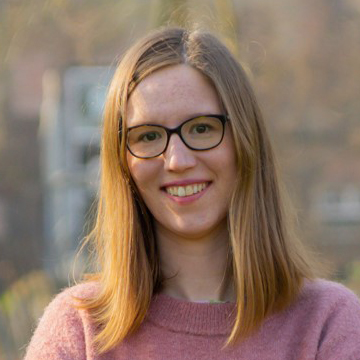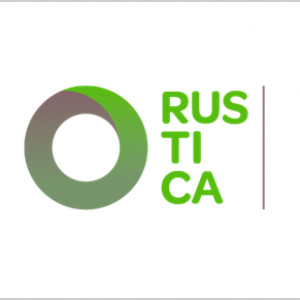 \
&
Contact us
\
&
Contact us
 \
&
Contact us
\
&
Contact us
Published on | 3 years ago
Last updated on | 4 months ago

sarah.stroobants@fwo.be
Under Horizon Europe Pillar II, calls may be subject either to a single-stage submission procedure or a two-stage submission procedure. This infosheet focuses on the specificities of the latter.
|
First stage |
Second stage |
|
- Submission of short proposal - Evaluation of Excellence and Impact |
- Submission of full proposal for those that passed threshold - Evaluation of Excellence, Impact & Implementation |
In stage 1 of a two-stage submission, applicants will be requested to submit only an outline application which will be evaluated against only two award criteria: ‘Excellence’ and ‘Impact’. The aspects that are taken into account under these criteria are more limited than in a full proposal (see General Annexes Section D).
The threshold for each of both criteria will be 4. The level of the overall threshold, applying to the sum of these two individual scores, is dynamic and will depend on the volume of proposals received. It will be set at a level that ensures the total requested budget of proposals admitted to stage 2 is as close as possible to three times the available budget*, and not less than two and a half times the available budget. The threshold is expected to be set at 8 or 8.5. (*Information on the total indicative budget for a call topic can be found in the respective work programme call topic text on the Funding & Tender Portal.)
You can consult the template of the standard application form for the first stage here (for Research and Innovation actions & Innovation actions). This document serves only as an example. The actual forms, provided in the online submission system under the Funding and Tenders Portal, might differ from this example.
As part of the standard admissibility conditions (see General Annexes Section A) applications (thus in the more common single-stage call topics) must include a plan for the exploitation and dissemination of results including communication activities, unless provided otherwise in the specific call conditions. This plan is not required for applications at the first stage of two-stage procedures.
In addition to the standard admissibility conditions, page limits will apply to parts of applications. The page limits, and sections subject to limits, will be clearly shown in the application templates in the Funding & Tenders Portal electronic submission system.
The limit for a first-stage application is 10 pages. In comparison: Unless provided otherwise in the specific call conditions, the limit for a full application for Research and Innovation actions & Innovation actions is 45 pages (in the case of lump sum funding, the limit is 50 pages).
If indicated in the specific call conditions, first-stage proposals of two-stage submissions will be evaluated blindly and applicants may not disclose their identity in Part B of their proposal. More information in the Infosheet on Blind evaluation.
Applicants are informed about the results of the evaluation, but no evaluation summary report (ESR) is sent for successful stage 1 proposals. Instead, the Commission publishes generalised feedback. NCP Flanders publishes such generalised feedback on its website (see an example here). Succesful applicants should receive the ESR from stage 1 together with the ESR for stage 2 at the end of the entire submission procedure.
Successful applicants will be invited to submit a full application for the second stage which will be evaluated against the full set of award criteria (General Annexes Section D). You can consult the template of the standard application form for a full proposal here (for Research and Innovation Actions & Innovation Actions). This document serves only as an example. The actual forms, provided in the online submission system under the Funding and Tenders Portal, might differ from this example.
The evaluation of second-stage proposals includes one additional admissibility check to ensure fair and equal treatment of competing proposals: the full stage 2-proposal must be consistent with the short outline proposal and may NOT differ substantially (i.e. obvious change concerning a substantial part of the proposed project) — otherwise it will be inadmissible. This rule should prevent applicants from deliberately setting out false promises in the first stage that are not reflected in their second stage proposals.
|
Examples of differences between stage 1 proposal and stage 2 proposal |
|
|
No substantial difference |
Substantial difference |
|
- Absence of one or two of the partners mentioned at stage 1 - Change of coordinator |
- Conceptual basis, or methodology has completely changed - Objectives of the work have been significantly altered - Expected impact no longer corresponds at all to stage 1 text |
There could be changes in the consortium composition between both stages because stage 1 will only assess the excellence and impact criteria, whereas the consortium composition will be assessed only in stage 2.
The Commission ensures systematic screening of all stage 2 proposals for manifest differences and does not rely only on the differences indicated by the applicants. Any justifications that the applicant has given for changes at stage 2 are examined. The Commission takes into account that stage 1 evaluation only concerns some of the award criteria and that the full proposal therefore necessarily includes some new elements.
For two-stage calls, the timing is different from the single-stage calls:
We offer news and event updates, covering all domains and topics of Horizon Europe, Digital Europe & EDF (and occasionally, for ongoing projects, Horizon 2020).
Stay informed about what matters to you.
By signing up, you can opt in for e-mail notifications and get access to
a personalised dashboard that groups all news updates and event announcements in your domain(s).
Only for stakeholders located in Flanders

The RUSTICA project obtained funding under Horizon 2020, more in particular under the topic ‘Closing nutrient cycles’. RUSTICA focuses on demonstration and implementation of circular bio-based nutrient valorisation chains, focusing on waste from the fruit and vegetable agro-food system. The project kicked off in 2021 and will run until 2024. It will use a strong multi-actor approach to co-create both socio-economic and technological knowledge in four case study regions in Europe and one in Colombia. The Flanders-based company DRANCO is one of the project partners and acts as technical project manager for the entire project. DRANCO participates in the project to develop its own technologies, to network and to help make the transition to a more circular based economy.